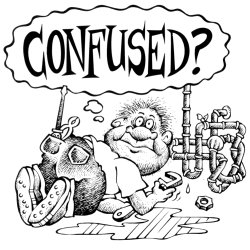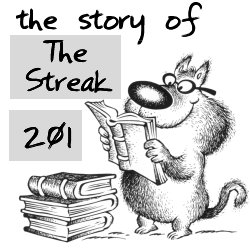THE
HISTORY OF WHIP, PAGE TWO
And now, on with our story ! |
Whip stayed hidden in the
honky-tonks till the late 50’s when the
high school and college kids started picking up on it.
In a twist, the dance now had
two styles : the Whip and the Dirty Whip. One was strictly footwork while the Dirty Whip
obviously added the hip motion. Danced here in Houston to black music at places like Jimmy
Menudis, the Cinder Club, and pressure cooker clubs along Telephone Road, you also heard
of the Push up at North Texas State and the Whip at Garner State Park. The dance was
pretty much limited to back and forth strutting and was still simple enough that people
could learn it by imitation and observation.
(For more
information about the Garner State Park era, click
here)
However by the early 70’s the bump &
grind of the Dirty Whip had blended with West Coast Swing-style fancy footwork. Women
could use a social form of the dance with more subdued hip motion for general
dancing. If the song and the man occasioned it, they could add a little spice and make
grown men weak with a nasty Bump Step that brought home whatever they had to deliver. And
deliver they did...when they felt like it !
|
Double Turns and
complicated patterns were also being added.
The Whip was developing into a far more
interesting and complex dance. The hip motion was still the signature move of the dance,
but now there was even more to learn. At this point, the Whip had become almost impossible
to learn just by feel, so Whip dancers banded together. The 70's marked the creation of
several Whip clubs here in the Houston area. Their main purpose was to teach the dance and
provide their members opportunities to practice. The 70’s were good for Whip due to
the terrific soul music of artists like Barry White, the Commodores, and Al Green.
"Love and Happiness", "Heard it Through the Grapevine", "Midnight
Hour", "Mustang Sally", and "Respect" are some of the
unforgettable Whip songs from the 60's and 70's.
|

|
The Double Turns were a
major development.
Neck wraps, free spins, waist wraps, spins to
the Bump...every pattern had some sort of turn in it. Sometimes you take things for
granted, but WC Swing dancers exposed to the Whip for the first time all comment on the
staggering array of different turn patterns. Indeed, a woman who did not spin well
faced an enormous obstacle. She either learned how to spin or found another
dance. Not only are Texas women famous for their blue side of town hip motion, but
they are given a lot of respect for their turning ability as well. I believe it is
survival of the fittest. Women who never learn to turn usually are forced to pack
their bags. The dance just isn't fun if you fear for your life.
The late 70’s and early 80’s saw
Whip go underground as the Disco and Urban Cowboy eras dominated the dance scene. However
the second half of the 80’s saw Whip hit its all-time peak in popularity. Many of
Houston’s best Western dancers were looking for a new dance challenge at the same
time as a series of great Whip music was being recorded. For example, Marvin
Gaye’s "Sexual Healing" and Tina Turner’s "What’s Love Got
to Do With It" won back to back songs-of-the-year in 1983-84, setting the stage for
artists like Michael Jackson, Madonna, and Billy Ocean to record many marvelous hits
perfect for Whip dancing. Whip classes were full, there were plenty of clubs playing Whip
music to practice at, and dance competitions were popular. "Billie Jean",
"Caribbean Queen", and "Lucky Star" were some of the big hits during
this Golden Era.
|
 |
Unfortunately,
Whip took a big downturn as the 90's began.
The start of the 90’s saw the powerful
"Boot Scoot Boogie" Western era begin while at the same time there was a
sharp downturn in dance music favorable to dancing the Whip. Sadly the influence of Rap
music and Seattle grunge rock led to a lot of music far removed from the "Whip
Sound".
|
|
History shows when the music dries up, so does the dance.
For example, the legendary Lindy Hop
vaporized when the Big Band Sound died after WW II and the Latin Hustle went poof when
Disco bit the dust. Not surprisingly, interest in Whip dropped sharply for the first half
of the 90’s. I was worried that I might be watching history repeat itself.
When it comes to history, I should be in a
good position to know. You can tell you are getting old when you no longer have to read
about history; you write it. No, smarty pants, I wasn't in World War II, but
Whip and I do go all the way back to the 70's.
Now
begins my personal story of how I learned to Whip.
I took my first
Whip class at Stevens of Hollywood here in Houston. At that time in 1977, Whip was the
most complicated dance I had ever tried to learn. Now with twenty more years under my
belt, Whip is still the most complicated dance. Like Sybil, Whip seemed to have
multiple personalities. For one thing, the lady never seemed to be doing the same thing I
was doing. For example, take the woman's Basic. Sometimes she did a Coaster Step,
sometimes a Double Hitch, a Triple Step, or a Loop Step. Sometimes I had to use arm
tension, sometimes I was supposed to relax my arm. Sometimes I led her forward on the
first beat, sometimes I led her on the second beat. Sometimes she did a Travel Step,
sometimes a Tap-Step. There was nothing simple about this dance.
|
 |
I barely had a clue as to
what I was doing.
I have never thought of myself as a natural
dancer, but I do have a gift for persistence so I stayed with the classes for seven
months. My downfall was the fact that I never once went out and practiced. When the Disco
era hit, I dumped the Whip and embraced the Latin Hustle as my first love. Two years
"Urban Cowboy" sent Disco to the recycle bin and now it was on to Western Swing.
At this point I started to learn Whip again in private lessons till I knew enough to
teach. When I started my first Whip class in May of 1983, I knew one thing for sure :
You have to practice to get
anywhere with this dance !
Based on
this certainty, when I began to teach,
I set up a tradition of going out Whip dancing
as a group right after class.
Heading to a place called Cooters, we
practiced together, had a great time, and our dancing improved naturally. It was a fun
time. My students improved. I improved. We all had a blast in the process. Little did I
know as 1986 rolled in that I was in for the greatest dance adventure of my life !
|

|
|
Click
here to read about The Streak, our concluding chapter in the History of Whip
|
|